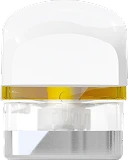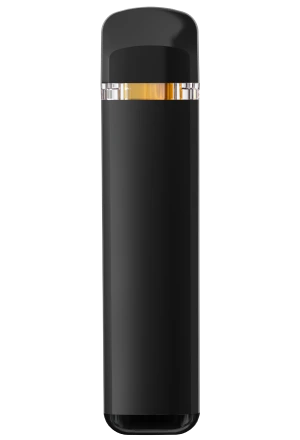mg Magazine: A Solid Foundation for Vape Industry Safety Standards
The federal government most likely will reschedule cannabis sometime this year. This reform makes it more pressing than ever for the vaporizer sector to proactively develop and promote scientific testing and research to establish the proper foundation for industry standardization and potential federal regulations.
If we, as an industry, do not allocate the necessary resources for comprehensive research and advocacy, cannabis vapes may very well be regulated the same way as nicotine vapes. This would present significant safety concerns for users and stunt the industry’s growth. That is exactly what we witnessed happen to the e-cigarette sector.
Cannabis must be regulated differently from e-cigs. Electronic nicotine delivery systems (ENDS), more commonly known as e-cigarettes, are required to submit a Premarket Tobacco Application (PMTA) to the U.S. Food and Drug Administration (FDA) and receive approval before selling any ENDS product. Among other requirements, the application sets a high standard for safety. The FDA requires testing for extractables and leachables, aerosol chemistry, and ninety-three harmful and potentially harmful constituents (HPHCs). On the list of constituents are recognizably toxic compounds like formaldehyde, uranium, arsenic, and benzene.
Cannabis vapes currently fall under state regulatory frameworks, which have fewer requirements than the PMTA. This is especially true regarding aerosol chemistry, device materials and construction, extractables, leachables, and shelf stability.
Given the complexity of cannabis vape formulations, we should expect testing for a broader array of HPHCs than those for which ENDS are tested. Therefore, it is increasingly important to get ahead of such regulations to ensure they protect both the safety and viability of the cannabis vape market.
The FDA has authorized the marketing of only twenty-three ENDS products to date. Imagine a market as massive as the United States with only twenty-three legal cannabis vaporizer products. Talk about stagnant! Perhaps worse, the paucity of FDA-approved ENDS has created an enormous illicit market of e-cigarettes that are subject to absolutely no oversight, creating immense risk for consumers who typically won’t know which products are safe for their intended use.
This should serve as a wake-up call for the cannabis vape sector: PMTA-style FDA regulations would be detrimental to the legal industry. Instead, we should advocate for a system that piggybacks off state regulations’ progress and supplements those regulations as needed to ensure safety without creating an insurmountable regulatory burden that leads to an illicit market of unsafe products.
How should the vape sector address testing and standardization to prepare for federal legalization? The obvious solution is demonstrating the ability to self-regulate before it’s too late. That means it’s time to prioritize safety.
First, we must ensure devices are intended for cannabis oil. Differentiating between e-cigarette devices and cannabis vaporizer devices is an important way to support more sensible regulation. It is well-established that nicotine vape cartridges do not work well with cannabis oil. If hardware is not intended for the appropriate oil, safety can be compromised.
Highlighting the differences using objective measures can strengthen the case for regulations independent of the e-cigarette industry. These objective measures should include puff topography, oil rheology, device thermography, particle character, and emissions chemistry.
Hardware certifications should have a clear rationale for specific applications to cannabis vape devices. Ideally, the industry should achieve a consensus around third-party and fit-for-purpose certifications before federal regulations arrive.
Many standards are in place, and aligning them to ensure safety and a robust market will be necessary. The organizations and testing standards industry hardware manufacturers currently use to ensure consumer safety include Underwriters Laboratories; Canadian Standards Association; Edison Testing Laboratories; Restriction of Hazardous Substances in Electrical and Electronic Equipment (more commonly known as RoHS); Registration, Evaluation, Authorization, and Restriction of Chemicals (REACH); and Code of Federal Regulations Title 21.
Next, we must standardize ingredient and vapor safety testing for additives. Many formulators use additives to optimize viscosity, flavor, and effects. But are these additives safe for inhalation?
Illicit operations are known to use dangerous additives like vitamin E, medium-chain triglycerides, and pine rosin as diluents and viscosity modifiers. These additives may be safe for ingestion or topical use but can be dangerous when inhaled.
Ingredient safety standardization must be in place to ensure consumer safety. But more importantly, inhalation safety should be the standard endpoint for assessing a vaporizer device’s risks and hazards.
Then, we must establish research-and-development and quality-control programs. Although focusing on aerosol emissions as an endpoint is a foreseeable regulatory requirement, standard extractable and leachable testing makes the most sense as a first-order measure of risk and hazard to determine the safety and quality of a vaporizer. While new aerosol and vapor testing requirements should become effective soon in some states, aerosol generation and capture methods for testing are far from standardized across the industry.
A standard for machine-puffing topography for generating vape device aerosols is required to harmonize research, regulatory development, and compliance. In the nicotine vape sector, researchers and regulators use a machine-puffing topography called Coresta 81. The nicotine puffing standard is not fit for cannabis vaporizer research as it is neither evidence-based nor representative of actual cannabis vaporizer user behavior.
Besides meeting the necessary state compliance testing standards, both individual vape brands and the industry as a whole should prioritize developing robust research, development, and quality-control programs focusing on machine puffing, device construction and materials, and formulations.
The American Society for Testing and Materials (ASTM) has an active committee focused on cannabis vape devices and appliances called D37.08. The stakeholders and regulators at the table of D37.08 make this committee the tip of the spear for industry standardization. Participating in such committees can help to standardize processes further.
Additional guidance should be drawn from the FDA’s PMTA, as this framework is likely to be the starting point for any future federal regulation.
Lastly, one of the biggest risks with ENDS devices is not toxicology but physical harm due to battery incidents. Our industry must ensure battery safety and educate consumers, regulators, and stakeholders about risk assessment and prevention.
Above all else, we must be prepared and proactive. The sheer number of stakeholders behind a single vape pen is astounding. Every link in the value chain, from the raw materials that go into producing hardware to the raw materials used to produce extracts, impacts the risks and hazards associated with a product. Advocating for these things with a unified voice through groups like VapeSAFER is a way to create a progressive pathway for the regulation of cannabis vaporizers.
By following the science and prioritizing safety, the cannabis vape sector can ensure its growth. Through respected standard organizations like ASTM and the International Organization for Standardization (more commonly known as ISO), industry standards can be set to inform sensible regulations by expanding our knowledge around why we test, how we test, and for what we test.
We can avoid the regulatory pitfalls that derailed the e-cigarette industry, but we must be ready and proactive.

Randy Reed is vice president of scientific solutions at ACTIVE®, a vertically integrated manufacturer and distributor of vaporizer technology and a founding member of VapeSAFER, a leading unified voice of the cannabis vaping sector. Reed is an award-winning scientist with more than twenty years’ experience in botanical extraction, cannabinoid formulations, delivery systems, product development, manufacturing and engineering, and patient




























































